This page may contain affiliate links. Please read my disclosure for more information.
If you’re like me and you want to spend your time on things that move the needle and make you money, you may want to consider creating Substack publications. Substack launched in 2017 and has become a popular platform for content creators, writers, and journalists who want to monetize their work through a blog and email newsletter.
What is Substack?
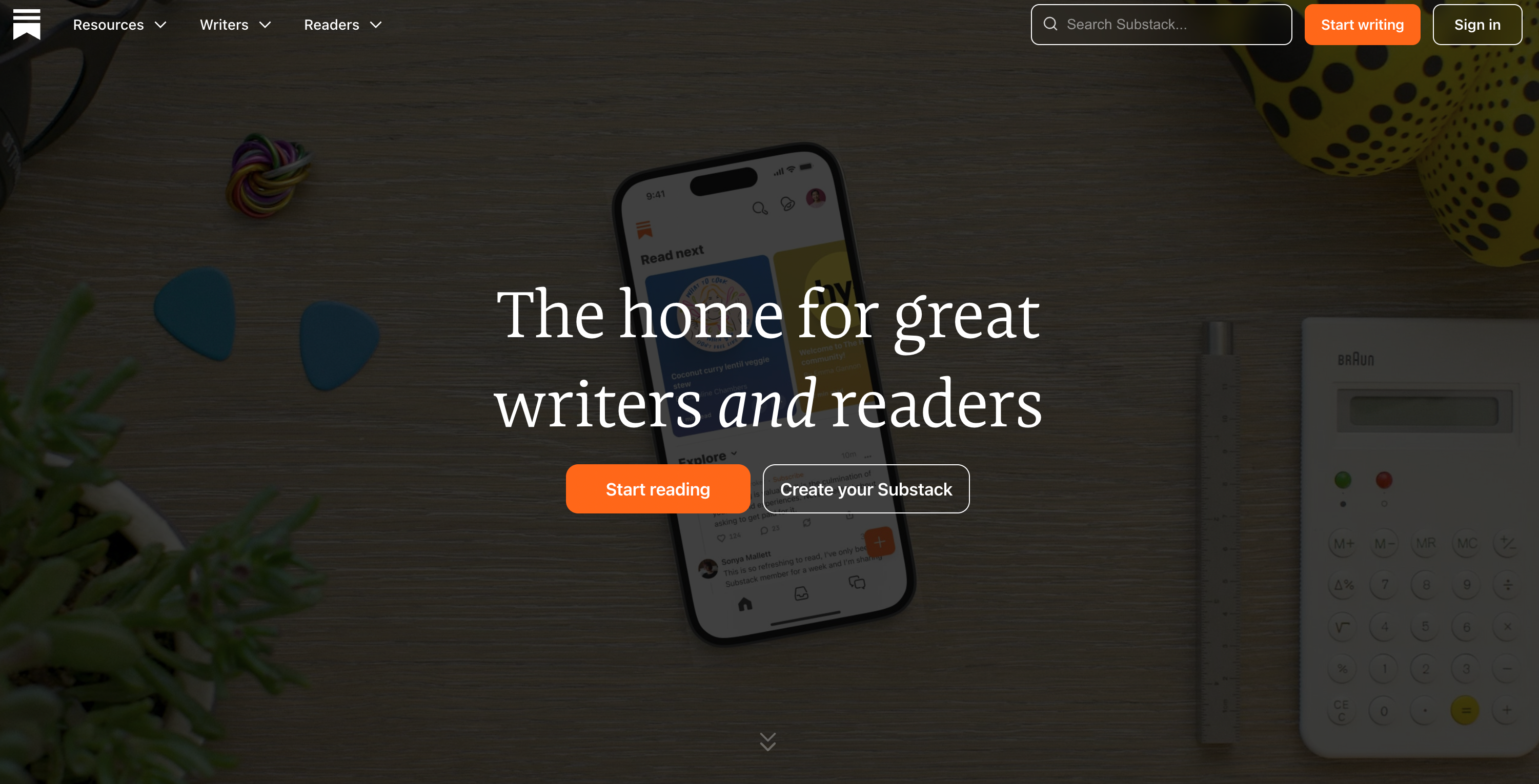
Substack is a user-friendly, all-in-one platform for creators who want to build a loyal following and earn more. It lets writers, podcasters, and anyone with a message publish their digital newsletters and podcasts and get paid for their work.
How Does Substack Work?
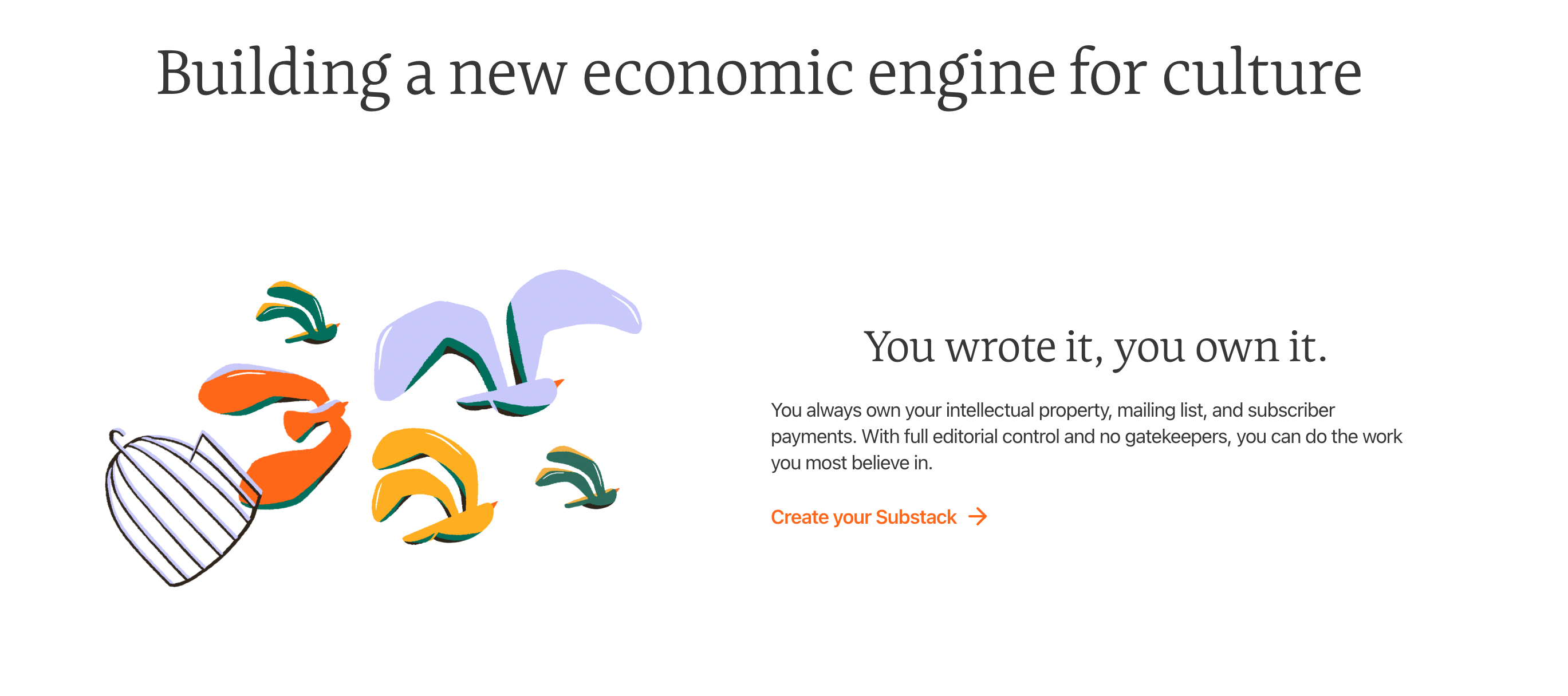
Substack makes it simple to start your own Substack newsletter and create and share your content directly with your audience. You can publish written content like newsletters and leverage the built-in podcast feature for audio discussions. This allows you to connect with subscribers on a personal level, catering to a wide range of interests and expertise. Readers can follow a substack publication, read or listen to free content, or subscribe to a paid subscription.
In short, Substack empowers creators to share their voice, build a community, and earn a living.
What’s New: Substack Features

As the Substack website evolves, they are coming up with new features to improve the platform. They’ve recently come out with Substack chat, direct messaging, and the new follow feature:
Substack Chat

The new Substack discussion threads are now called Substack chat. The feature allows your readers to have more in-depth conversations around your content. Here’s how it works:
- Threaded Comments – Replies can be nested under specific comments, creating a more organized discussion and making it easier to follow specific conversation threads.
- Visibility – A chat icon will appear next to the title of the post to indicate a threaded discussion is happening.
- Comment Permissions: You control who can participate in the discussion based on your post settings:
- Public Posts (“Everyone”): Any reader with a Substack profile can comment and participate in the thread.
- Paid Posts with Scheduled Free Access: Even if your post is initially available only to paid subscribers, you can set it to unlock for free readers at a future date. Once unlocked, any reader with a Substack profile can participate in the comments.
Direct Messaging (DM)
This feature is still under development but allows for more private communication with a small group of subscribers. You can only use the chat tab to DM readers you’re connected directly to which helps you build a relationship and community.
New Follow Feature
Substack recently added a following feature similar to other social media sites. The new follow feature lets you keep up with the latest content from writers and other content creators you admire without needing to subscribe. This streamlines content discovery and exposes your work to a wider audience, potentially attracting new subscribers who are already interested in your niche.
Some writers are not as happy about this feature, saying it hurts the number of subscriptions, while others are saying it helps them stay connected to a wider audience pool.
How to Start a Substack
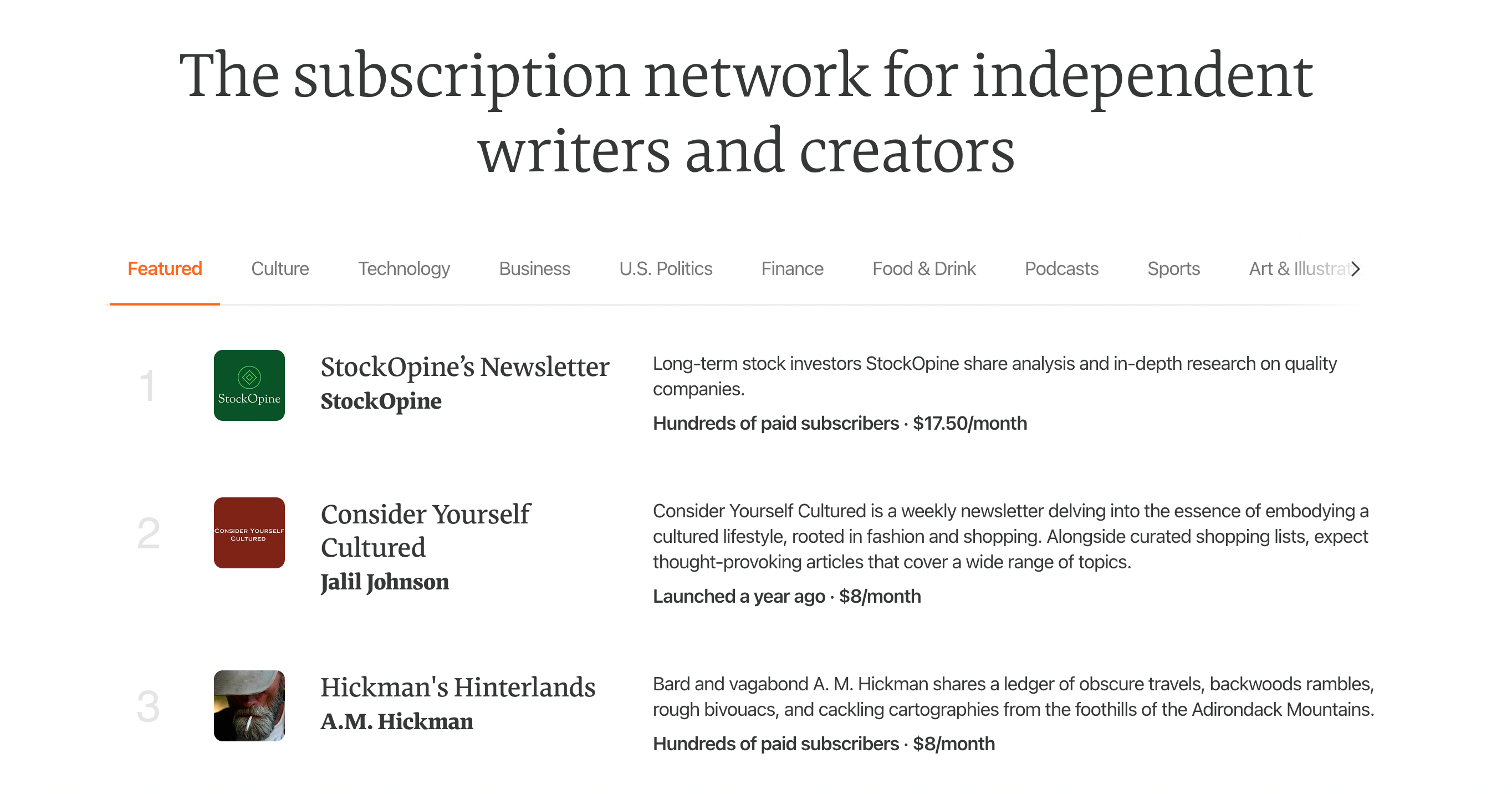
Substack empowers creators to share their passions and expertise directly with an audience. Here are the steps to get your Substack up and running:
1. Sign Up and Create Your Profile:
- Head to Substack and click “Start Writing.”
- Create an account using your email address and password.
- Create a profile showing your profile picture, niche, and writing style.
- Include a captivating bio that introduces you to your audience.
2. Choosing Your Content Focus:
- Identify your area of expertise or passion. What unique perspective can you offer?
- Research your target audience. Who are you trying to reach? What topics interest them?
- Decide on your content format (written, audio, or a combination).
3. Crafting Your First Post:
- Write a high-quality and engaging first post that sets the tone for your Substack.
- Consider including a call to action, encouraging readers to subscribe for more.
4. Setting Up Subscriptions (Optional):
- Substack lets you offer free or paid subscriptions. To entice readers, consider offering a limited amount of free content.
- Paid subscriptions provide a recurring revenue stream. Research subscription rates in your niche to determine a competitive price.
5. Growing Your Audience:
- Promote your Substack on social media platforms like Twitter, Facebook, or relevant online communities.
- Cross-promote on your existing website or blog (if you have one).
- Collaborate with other Substack creators in your niche for cross-promotion.
- Guest post on relevant websites or publications to reach a wider audience.
6. Optimizing for Success:
- Write captivating headlines that pique reader interest.
- Utilize relevant keywords in your posts and titles to improve search engine ranking.
- Regularly interact with your readers by responding to comments and fostering discussions.
- Experiment with different content formats to cater to diverse preferences.
Substack Subscription Options
Substack offers a transparent and straightforward approach to subscriptions. Creators can choose to provide free content, offer paid subscriptions, or use a hybrid model, offering flexibility to both the creator and the audience.
- Free Content – Creators can opt to publish free newsletters and podcasts, which is an excellent way to build an audience and provide value without a paywall.
- Paid Substack Subscriptions—To monetize, creators set a subscription price, allowing access to exclusive content. This model is perfect for established creators with content that warrants a premium.
- Hybrid Model – Combining free and paid content allows creators to reach a broader audience while still monetizing a portion of their work.
Whether you’re a writer seeking to share your stories or a professional aiming to disseminate your knowledge, Substack offers the tools and flexibility needed to make your unique voice heard in the crowded digital landscape.
Here are Six Ways to Make Money With Substack
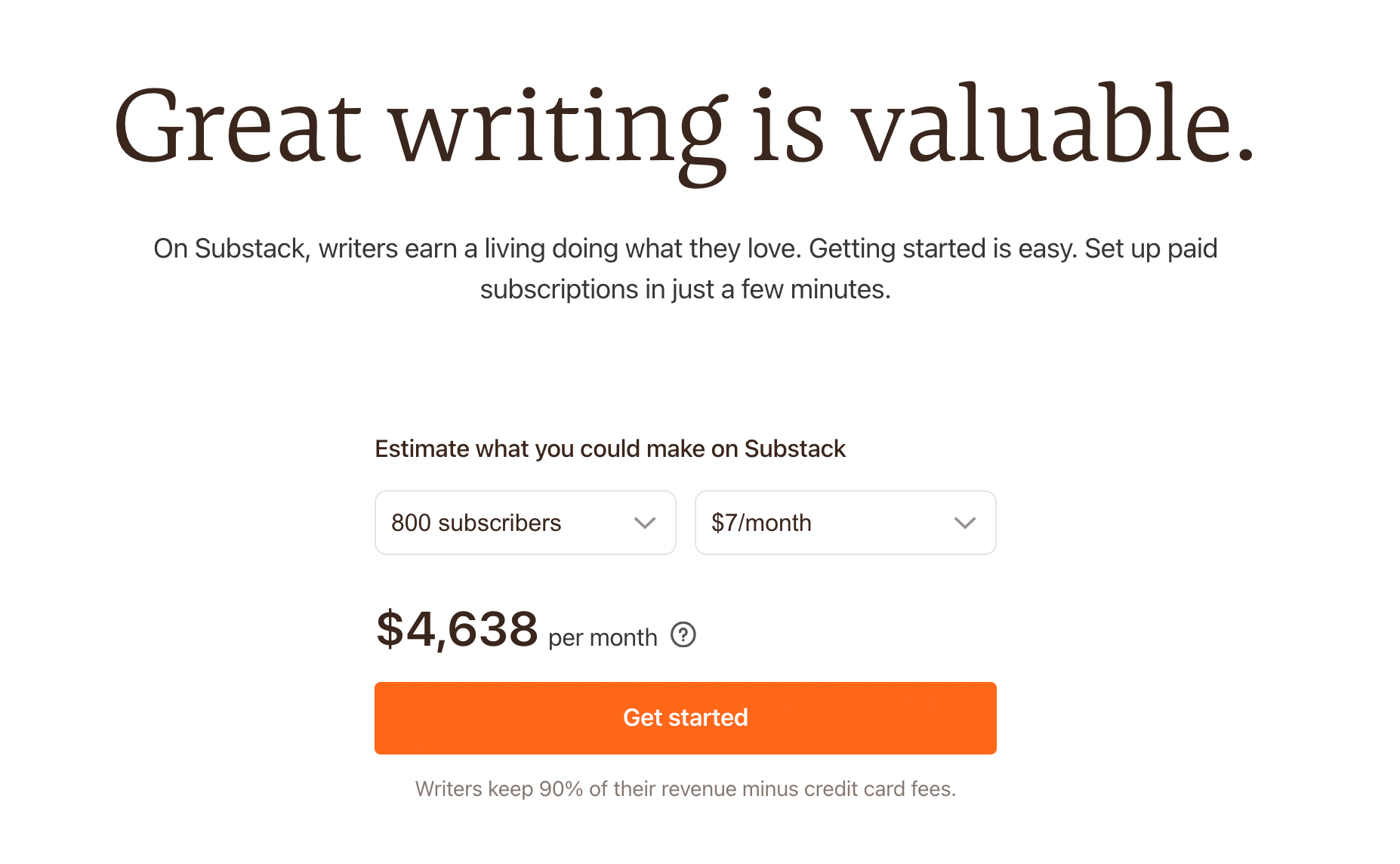
As a creator, you are at the center of Substack’s success by contributing to newsletters and podcasts. You make money on Substack with a great newsletter idea. If you’re a multi-passionate entrepreneur, don’t worry—Substack allows you to have more than one newsletter on your account.
Substack’s model caters to a wide range of content creators, from established journalists and writers to new writers looking to carve out their niche. Whether individuals seek to share their expertise, tell stories, or explore topics of interest, Substack provides a simple interface and direct channel to reach and monetize their audience.
Content creators on Substack benefit from a straightforward and transparent monetization model. They can offer their newsletters and podcasts for free to build an audience or set up paid subscriptions to generate income.
1. Subscriptions
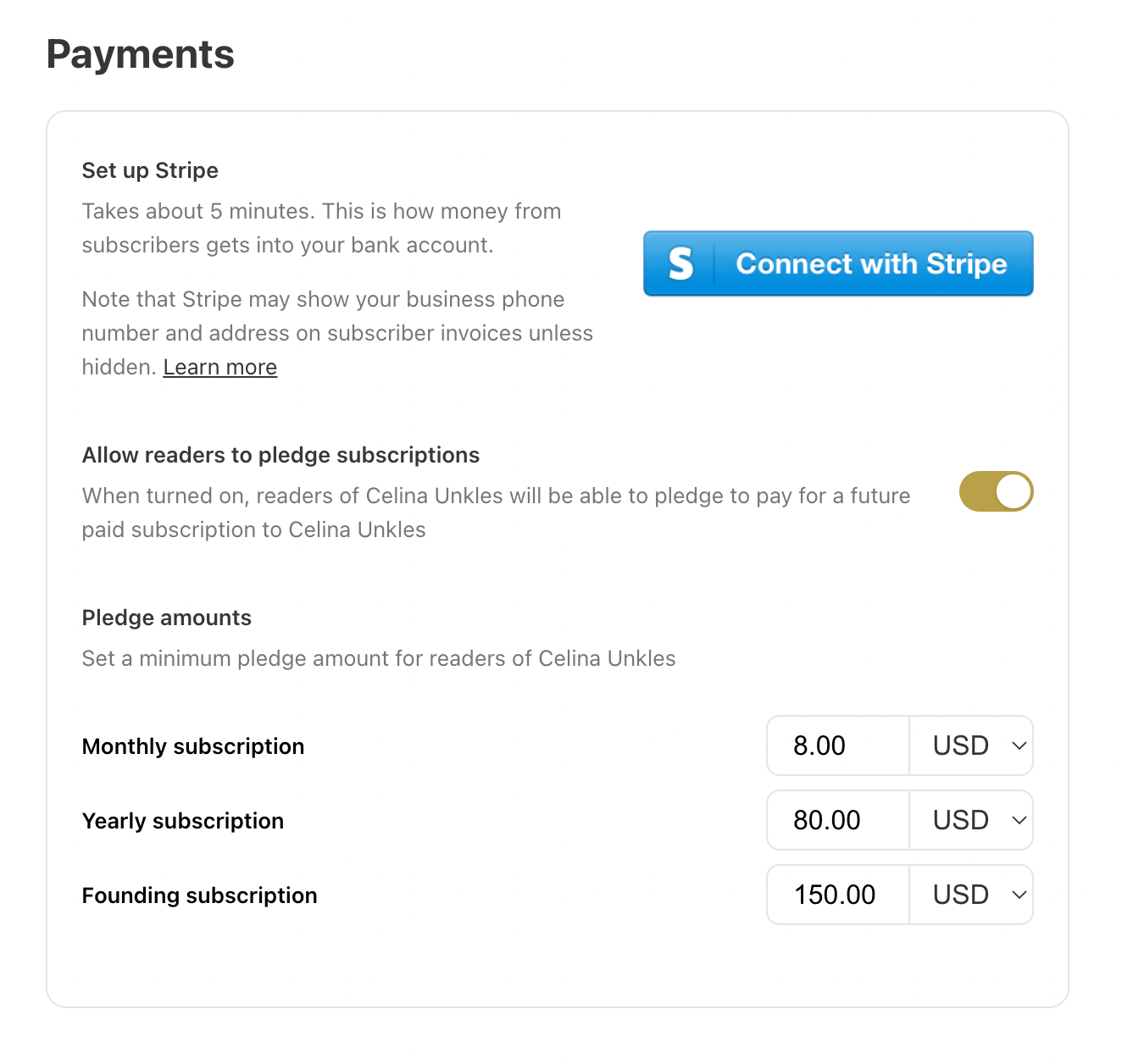
Subscriptions are the foundation of monetization on Substack. They allow you to offer exclusive content to paying subscribers, creating a recurring revenue stream.
Substack lets you set your price for your monthly or annual subscription fee. Consider factors like the value you offer, market research on similar content, and your audience’s willingness to pay.
2. Exclusive Content
Provide high-quality content that justifies the subscription fee. This could include:
- In-depth analysis or reporting – Offer deeper dives into your niche compared to the free newsletter content.
- Early access – Give subscribers early access to new content, like articles, podcasts, or videos.
- Bonus content – Provide exclusive bonus materials like downloadable resources, interviews, or Q&A sessions.
- Community access – Create a private forum or chat room for subscribers to interact with you and each other.
- Free vs. Paid Tiers – Offer free subscriptions for a limited amount of free content to attract readers. Reserve premium content and features for paying subscribers.
- Highlight Subscriber Benefits – Clearly communicate the advantages of subscribing on your Substack page. Regularly showcase exclusive content and remind readers of the value they receive.
3. Founding Members
Offer a higher-tier subscription level for dedicated supporters. Making money with founding members offers a way to generate income on Substack.
How to Set Up Your Founding Member Tier:
- Pricing Strategy – Founding Memberships should have a higher price point than regular subscriptions. Analyze the value you offer and research similar paid content to determine a competitive price.
- Exclusive Content Value – Founding Members deserve a premium experience. Offer in-depth content, early access to a wider range of materials, or exclusive interviews that justify the higher cost.
- Limited Spots (Optional): Consider creating a limited number of Founding Member spots. This creates a sense of scarcity and exclusivity, potentially increasing its appeal.
4. Donations and Tips

Allow readers to give you tips and make one-time donations. This feature is not built-in, but you can provide a link to a tip platform such as ConvertKit. ConvertKit has a tip jar feature that allows your audience to send you a tip for your content.
5. Podcast Feature
Substack isn’t just for written content anymore! They now offer a built-in podcast feature, allowing you to publish and manage your podcast directly on the platform. This opens another avenue for monetization. You can offer exclusive podcast episodes or early access for paid subscribers, creating additional value for your paying audience.
You could also integrate your podcast with popular podcasting platforms for wider distribution and potential advertising revenue outside of Substack.
6. Affiliate Marketing on Substack
While Substack doesn’t have a built-in affiliate marketing program, you can still use affiliate marketing to earn income alongside your other Substack revenue streams. By promoting another company’s products or services within your posts, you’ll provide the reader with value and earn a commission. always make sure to disclose affiliate links and follow the guidelines of Substack and your affiliate partners.
Using Affiliate Marketing on Substack Posts
- Promote Relevant Products – Only recommend products or services that genuinely align with your content and target audience. Partner with affiliate programs that have a good reputation. Building trust with your readers is key.
- Disclose Affiliate Relationships – Be transparent with your readers. Clearly disclose that you’re using affiliate links.
- Make it natural – Don’t force affiliate links into your content. Weave them in organically where they provide value to your readers, such as within product reviews, resource lists, or tutorials.
Examples of Affiliate Marketing on Substack:
- A tech blogger might include affiliate links for recommended software or hardware in their reviews.
- A food blogger could promote affiliate links for blenders or protein powder brands.
- A mom blogger specializing in parenting could incorporate affiliate links for time management apps or caregiving platforms.
How to Get Subscribers on Substack
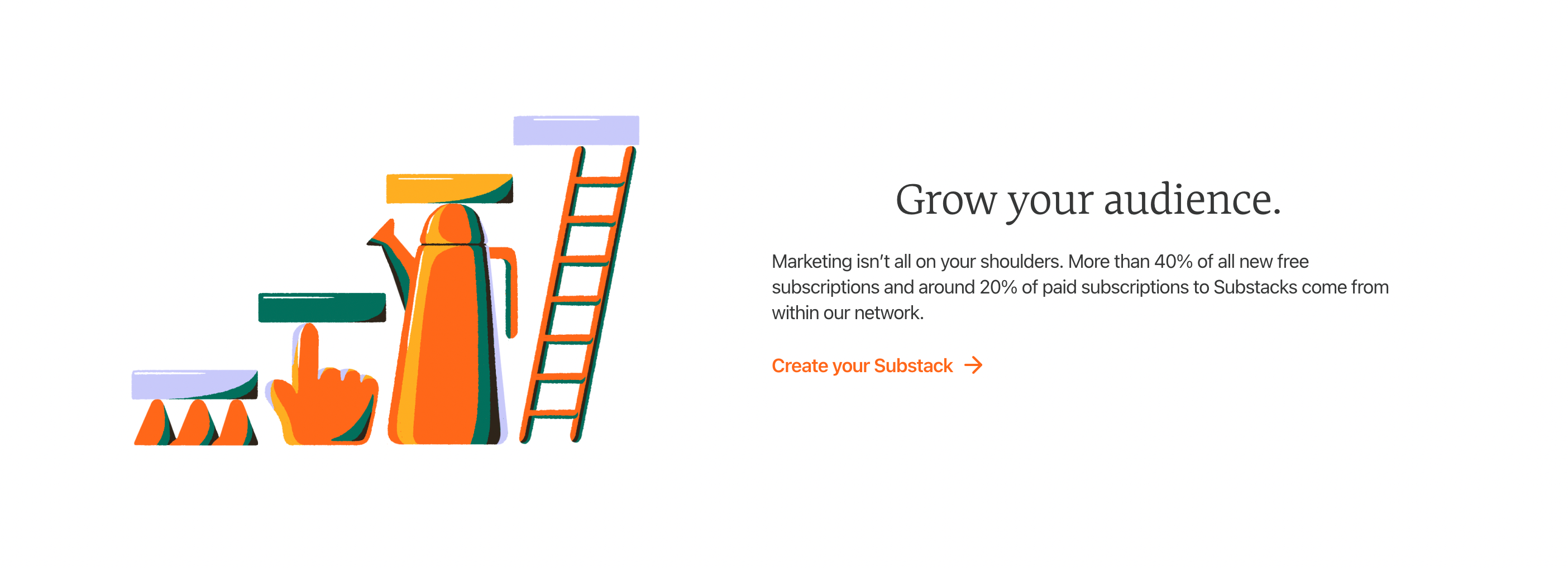
There are many ways to grow your subscriber list and audience on Substack. Gaining subscribers on Substack is a gradual process that requires patience, effort, and consistency. By using these strategies to expand your reach, you can build a substantial and engaged subscriber base over time.
1. Create High-Quality Content
Create high-quality content that offers value and is not easily found elsewhere. This could be an in-depth analysis, unique insights, personal stories, personal writing, or professional advice. Publish consistently to keep your audience engaged and looking forward to your next piece.
2. Leverage Social Media
Share and promote your Substack publications on social media platforms like Pinterest, Twitter, LinkedIn, Instagram, and Facebook to reach a wider audience.
3. Utilize SEO
Optimize your Substack posts for search engines by using relevant keywords, titles, and descriptions. This can help attract organic traffic from people searching for topics you cover.
4. Offer Free Content
Start with offering free content to attract subscribers. Once you’ve built a solid base and established your value, introduce a paid subscription model for premium content.
5. Collaborate with Other Creators
It’s always a good idea to cross-promote and collaborate with other Substack writers or podcasters. Guest posting or interviewing each other can introduce your content to new audiences.
6. Use Calls to Action
Include clear calls to action in your content, social media posts, and any public appearances or interviews. Direct people to sign up for your newsletter.
7. Email Marketing
If you have an existing email list or contacts interested in your work, invite them to subscribe to your Substack newsletter. Offer a free download, an eBook, or access to exclusive content as an incentive for signing up.
8. Paid Advertising
Consider using paid advertising on social media or search engines to target potential subscribers interested in your niche. Focus on platforms where your target audience is most active for the best return on investment.
9. Provide Exclusive Benefits
Offer benefits like exclusive content, early access to new posts, short stories, or episodes, discounts on products or services, or access to a private community.
Substack Pro’s and Con’s
Substack Pro’s
- Substack is very easy to use and quickly set up.
- It’s free to start without taking any financial risk.
- You can connect directly with your subscribers through comments and discussions.
- If you choose to leave the Substack platform, you can take your email list with you.
- Substack has a built-in readership.
Substack Con’s
- Substack takes 10% of your subscription revenue.
- It’s not an email marketing tool; it’s a publishing tool. Substack won’t have email automation, landing pages, and all the other tools you need to grow an email list like you would with an email marketing tool like ConvertKit.
- Stripe doesn’t operate in every country. You won’t receive donations and pledges for your efforts without access to Stripe.
- Lacking the SEO benefits you’d get with your own website.
Substack Alternatives
Beehiiv
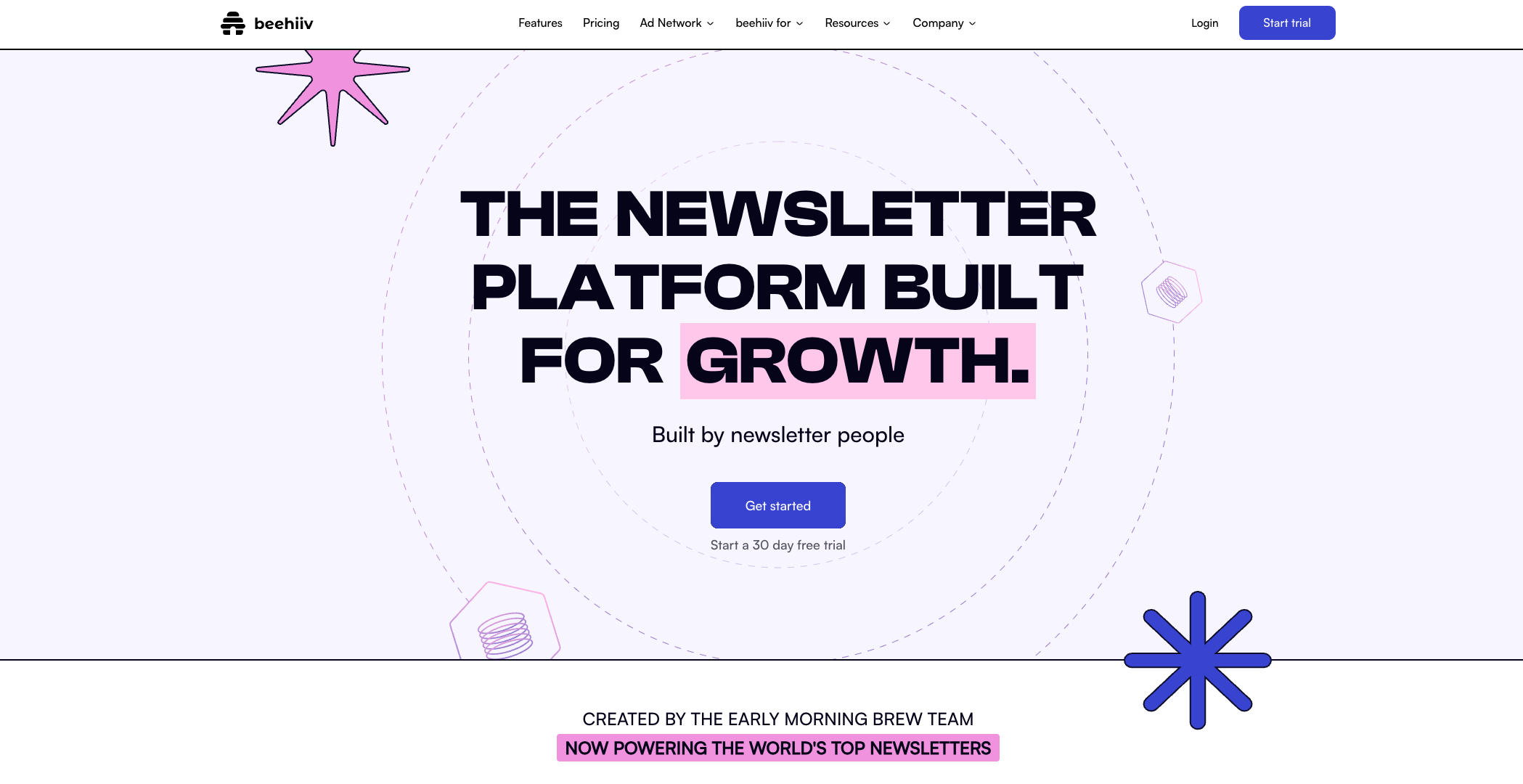
A relative newcomer, Beehiiv is quickly gaining traction for its user-friendly interface and creator-centric features. It offers all-in-one functionality for creating, publishing, and monetizing newsletters. Similar to Substack, Beehiiv allows for free and paid subscriptions, with a focus on helping creators grow their audience and revenue.
Medium
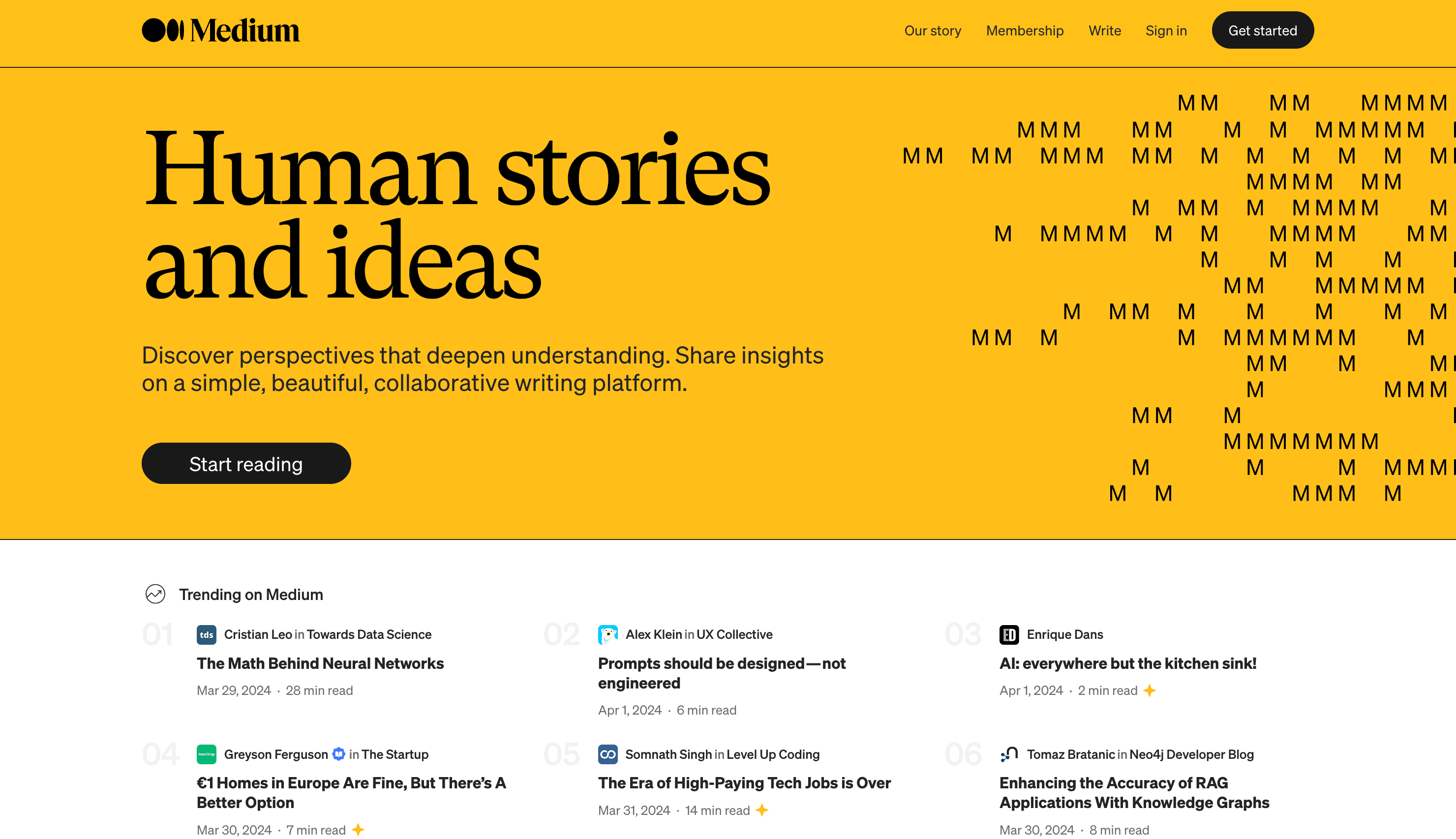
An established platform with a large built-in audience, it is ideal for independent writers wanting to reach a wider audience and potentially earn through reader engagement (not subscriptions).
ConvertKit
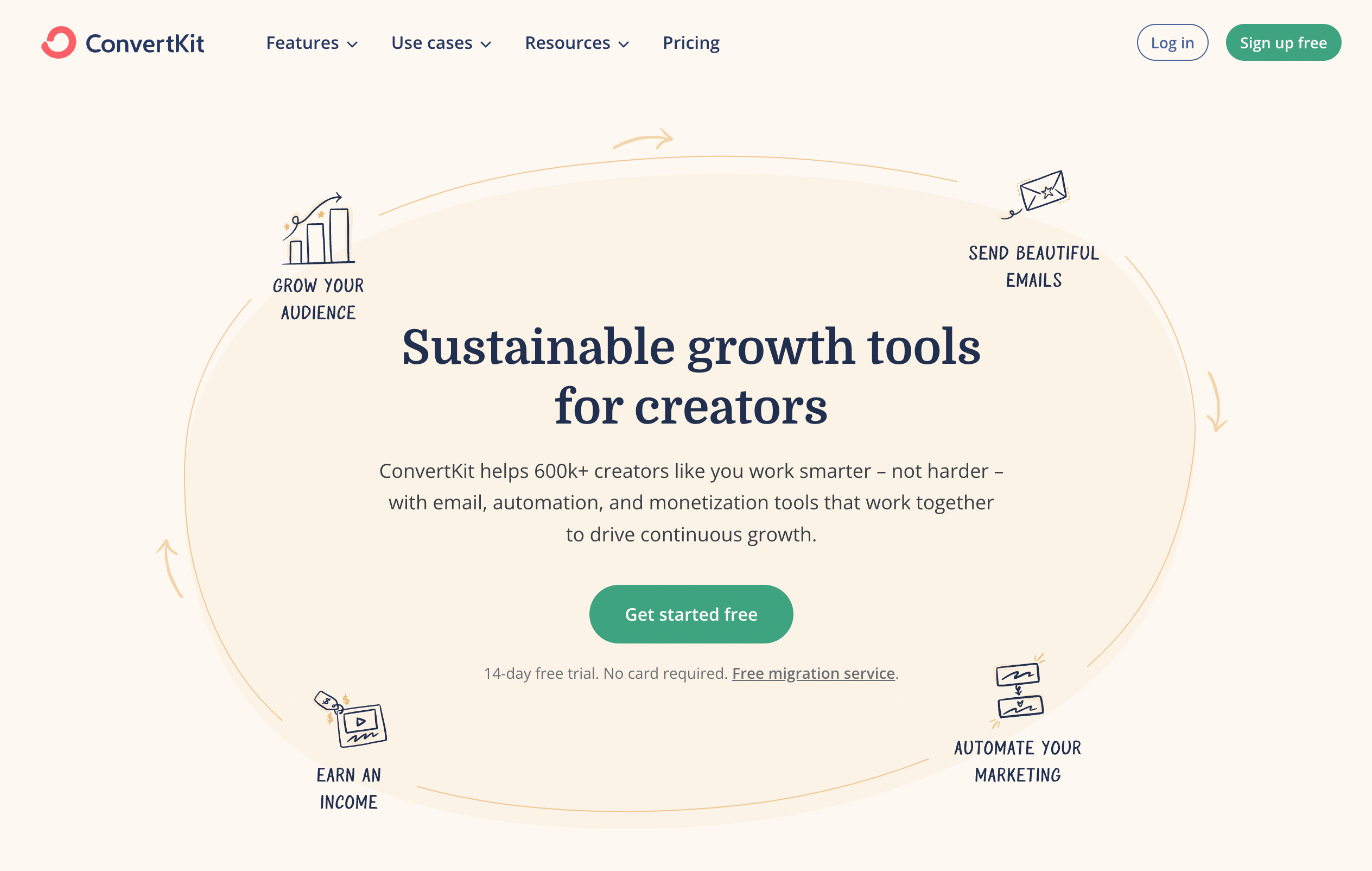
It is primarily an email marketing platform, but it also has landing page creation and commerce features. It is good for creators focused on building an email list and selling digital products alongside their writing.
WordPress
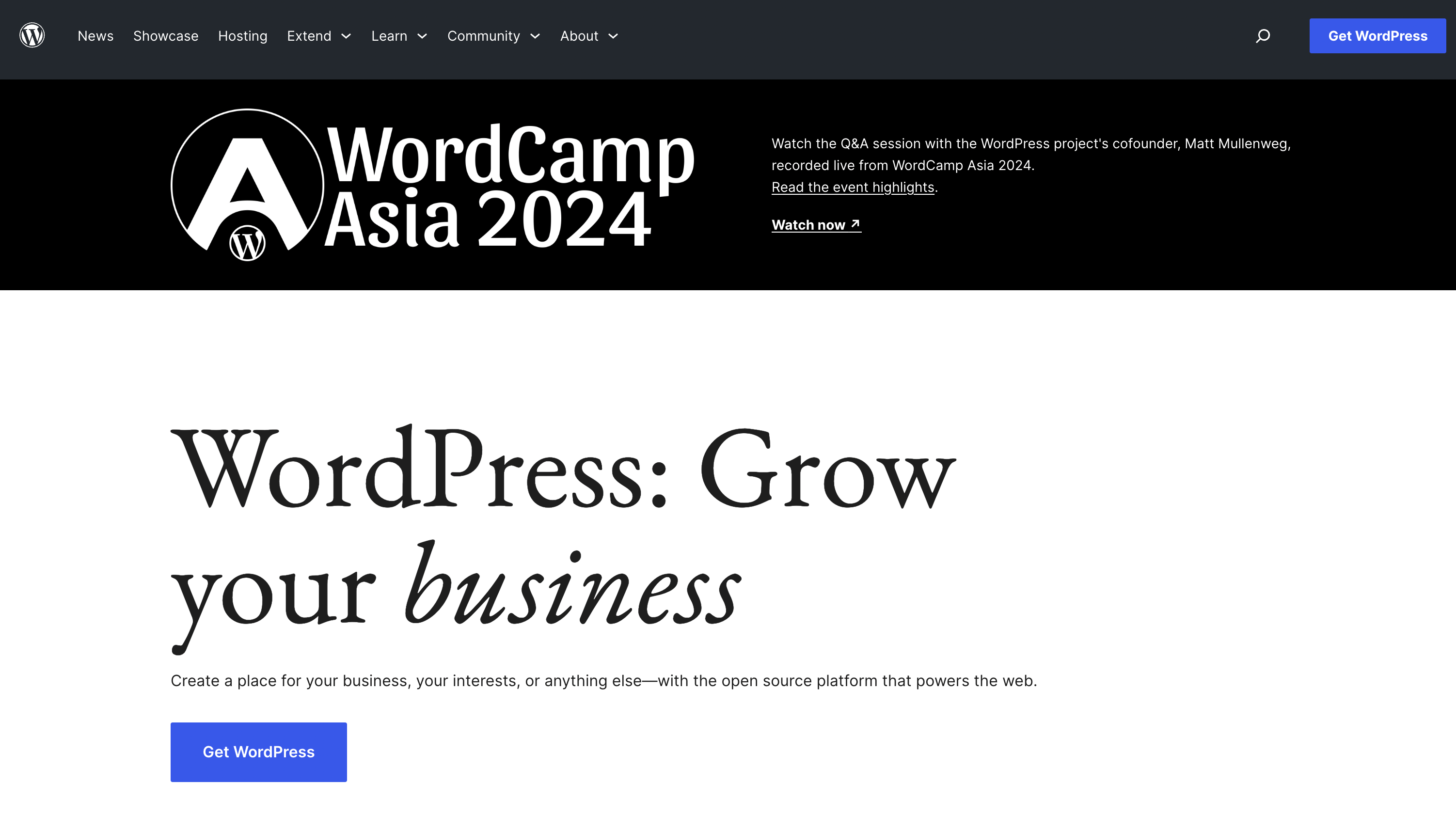
WordPress.org is a widely used blogging platform with a free plan and various paid options for customization and monetization (through advertising or plugins). Compared to Substack, it offers more flexibility in design and functionality.
As a beginner you could also learn how to start your own blog business and make money online.
FAQs: How Does Substack Work?
1. Is Substack free to start?
Yes, creating a Substack account and starting a newsletter or podcast is completely free. There are no upfront costs associated with using the platform.
2. How much does it cost to use Substack?
Substack charges a fee only if you offer paid subscriptions to your content. They take a 10% commission on all subscription revenue you generate, with additional payment processing fees typically around 2.9% + 30¢ per transaction. There are no platform fees for free content.
3. How much do Substack writers make?
There’s no one-size-fits-all answer, as income depends on various factors like subscriber base, subscription price, and additional revenue streams (donations, affiliate marketing). Some Substack writers earn a full-time living, while others use it to supplement their income.
4. Is Substack a good way to make money?
Substack can be a good option for monetizing your writing or podcasting if you can build a dedicated audience willing to pay for your content. The platform offers a straightforward way to collect subscription fees and potentially reach a wider audience. However, success requires effort in creating high-quality content, promoting your Substack, and engaging with your subscribers.
5. Does Substack have a referral program?
Yes! Substack offers a gift subscription referral program, paid subscribers and other writers can bring new readers to your publication by gifting them access to your paid content for a limited time.
If you enjoyed this, you may also enjoy reading these articles:
Substack vs. Medium | Which is Better 2024?
Beehiiv Review: My Thoughts About the Newsletter Platform
Substack Notes | What are notes, and why you should be using them?

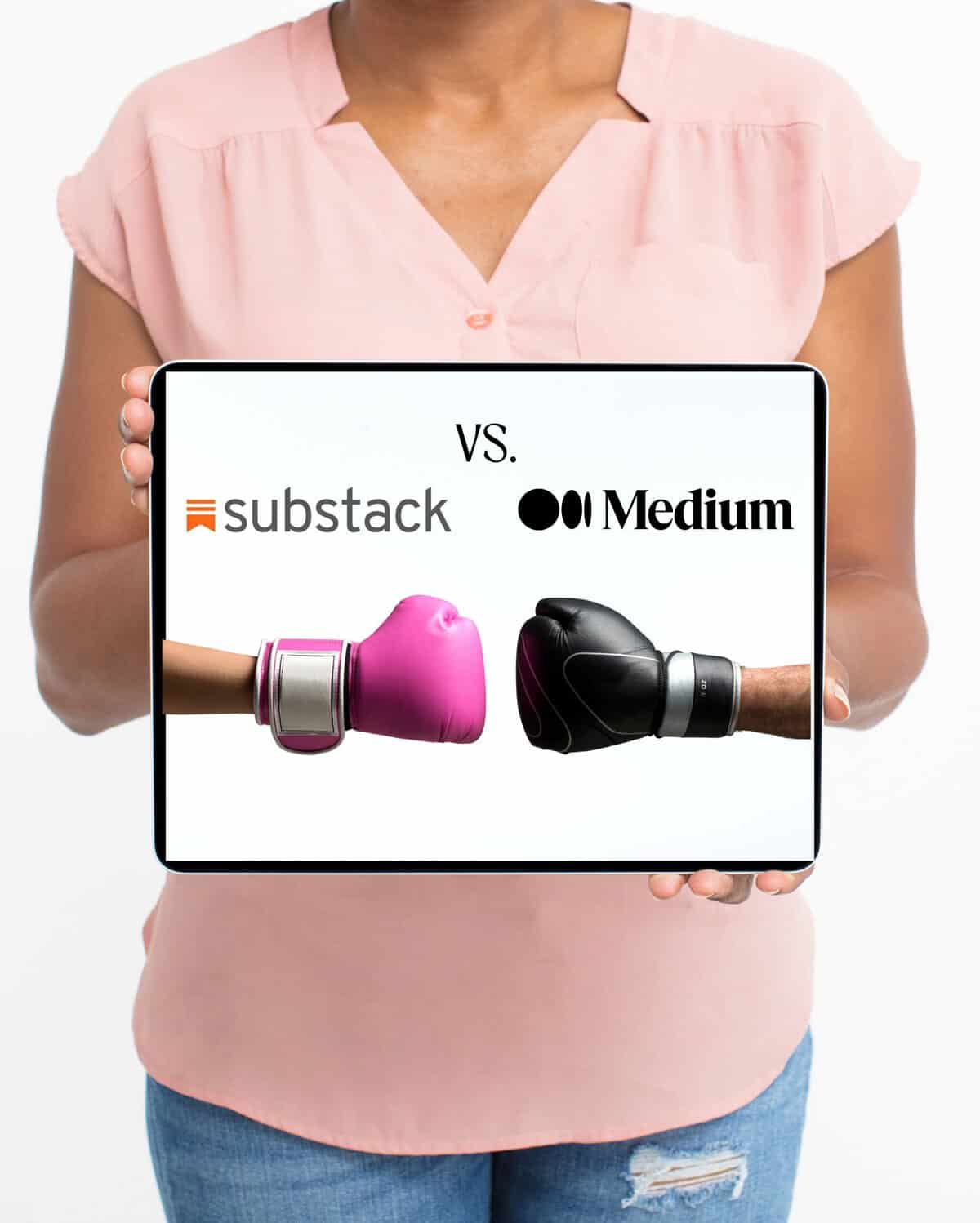
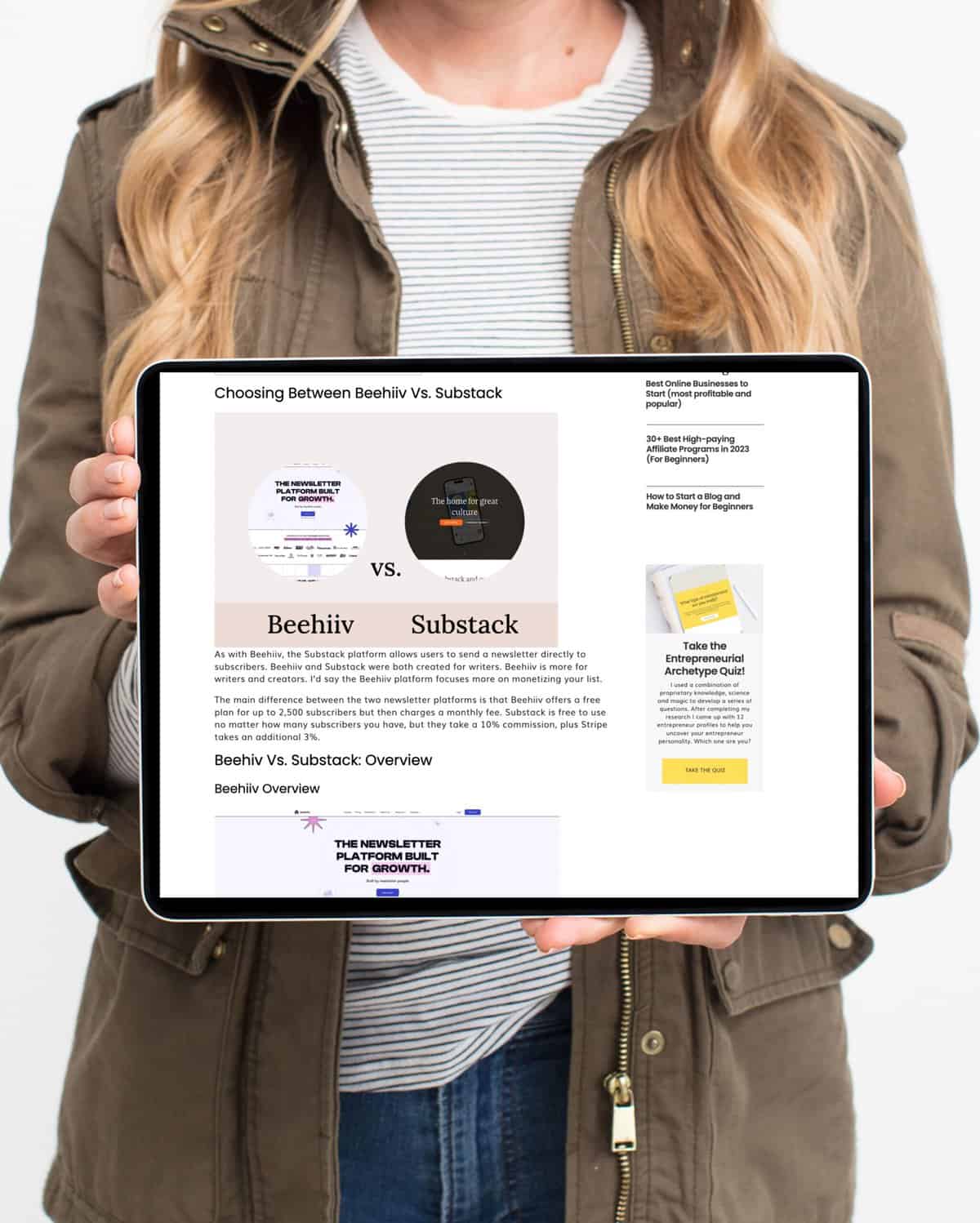



+ show Comments
- Hide Comments
add a comment